Volleyball drills for technique general
Organization:
- Players in a row on p1
- Trainer with ball pit on p2
Execution:
- Trainer throws balls in an arc in the middle of the field.
- Players must:
- Catch and pass the ball and throw it in the ballcage.
- Turn to p1 and catch at belly height.
- Make a turn in the run and catch the ball
- Sprint from lying position to the ball and catch it
- At the place where the ball is going to fall, lie down and let the ball bounce on your back
- Per person 2 balls
- One ball between the legs/under the arm, other in two hands on a side of choice, throw ball straight up and catch with two hands
- When the ball is up on one side, throw the other ball up on the other side.
- Keep arms straight, throw as much as possible straight up
- Pairs 2 balls.
- One person throws a ball straight to the other person
- Meanwhile the other person throws his ball straight up and throws it back.
- Then catch your own ball
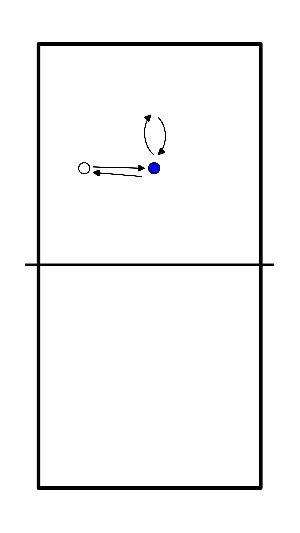
- 1 player at position 2.
- 1 player on position 3.
- Coach or player on position 4.
- Rest of the players in a line behind the back line at position 1.
- Player at position 2 throws a deep ball.
- Player passes back.
- Player at position 3 throws a short ball inside the three meter line.
- Player passes back ball.
- Player/coach at position 4 hits or throws a deep ball.
- Player passes it back and joins the back of the row again.
- Don't forget to pass regularly!
- Coach stands in the middle by the net.
- Line of three players stand behind the back line.
- Trainer throws balls alternately to the right and then to the left.
- Players start walking in circles because they are in threes.
- Players who are not in line are collecting balls.
- Playmaker at the net.
- Two middle attackers, two outside and two diagonal.
- Other players line up to pass.
- Trainer puts ball in play from the other side of the net.
- Passer passes, playmaker chooses attacker and an attack is made.
- After the attack players get the ball and join the passers.
- After passing attack on your own position (or an empty position).
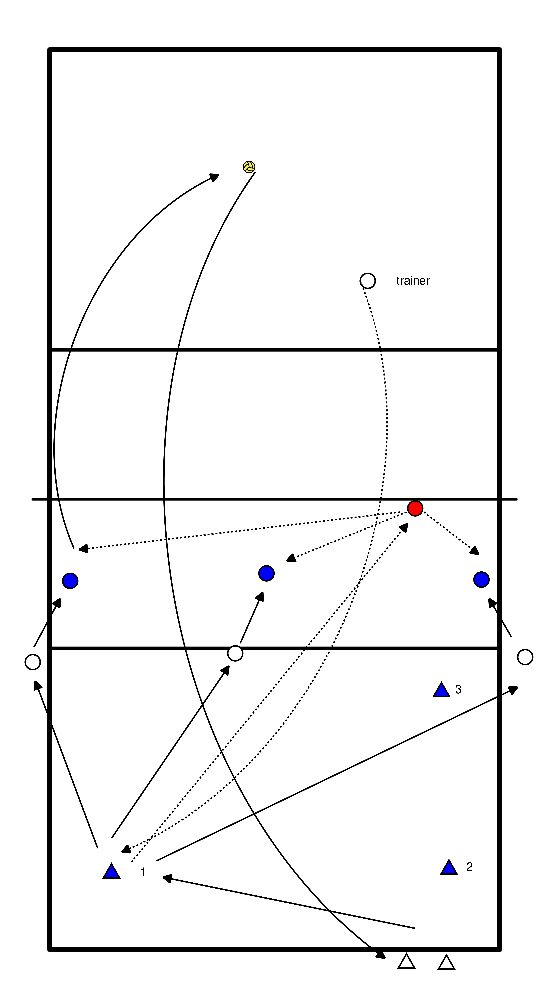
- There is one passer in the field at position [6].
- The trainer or a playmaker stands with the balls at the net at position [3].
- The ball is introduced by hitting or pricking and there is a variation in short/long and hard/soft.
- The passer keeps the ball from the ground (prio 1) and provides the pass to [2/3] (prio 2) where the ball is caught by a team mate.
- This exercise can be played in two variants.
- A. [suitable for large teams]
- After the pass, a new player is rotated into the field and the passer joins the back of the line.
- High tempo!
- The team can be split in two, so that one team always picks up the balls from the other team.
- B. [suitable for small teams]
- The passer remains standing.
- He quickly takes up his position again after the pass and processes a new ball (10 in total).
- The other players spread out to collect the balls.
- After 10 passes the passer takes off and the ball is passed.
- High tempo!
- Explanation:
- 2 teams of 3 players
- Per team 3 volleyballs (different balls so you can tell the difference, 2 'baby' and 1 'normal' ball)
- The team must play the 'normal' ball over the net in 3 times and meanwhile the 'babies' are thrown over.
- Each player may only touch the 'normal' ball once!
- (When a player has played the 'regular' ball, he gets a 'baby' thrown to him)
- Starting positions:
- Mid-back has no ball. Mid-back has no ball (he passes the ball to the distributor).
- Distributor gives a set-up on the outside.
- 3rd player plays the ball over the net. (At first do not attack, only if it goes well!)
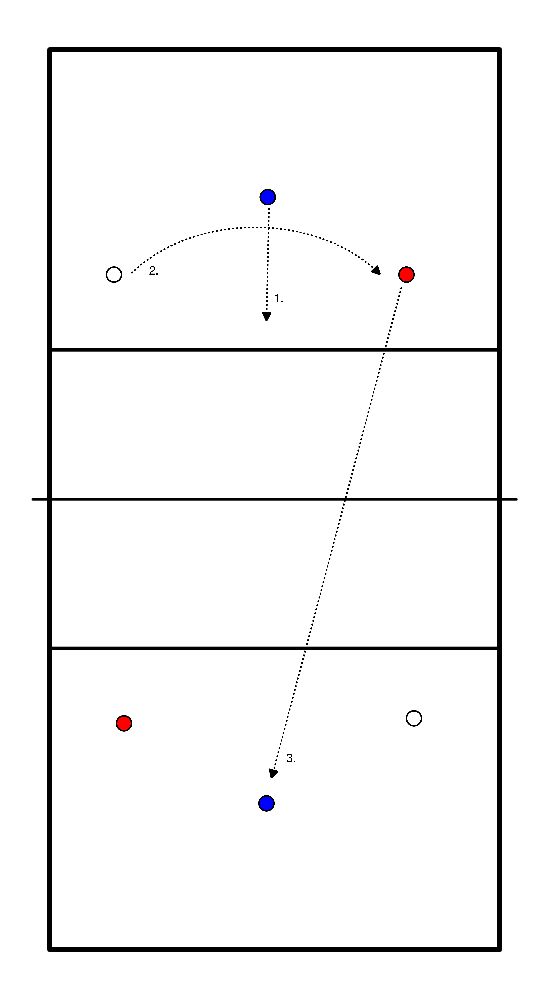
- This exercise is about the movement of the middle block and cooperation with the outside blocker.
- The ball is introduced through service or throw in (by the trainer or team-mate).
- Service is towards the passer.
- Passer brings the ball to the distributor.
- The distributor sets up the attack.
- After 10 attacks the game is continued.
- Players prefer to play on their own position.
- Important for the exercise:
- The playmaker communicates with his attackers about the desired attacking position and speed (especially the alternation between rise and short of the middle attacker).
- Mid block jumps with a rising attack (not full).
- If the ball goes outside, he lands on his left foot and moves outside to set up a two-man block (connecting).
- If the ball is played over middle, the outside blocker steps out to make a pass if the ball falls short or is hit.
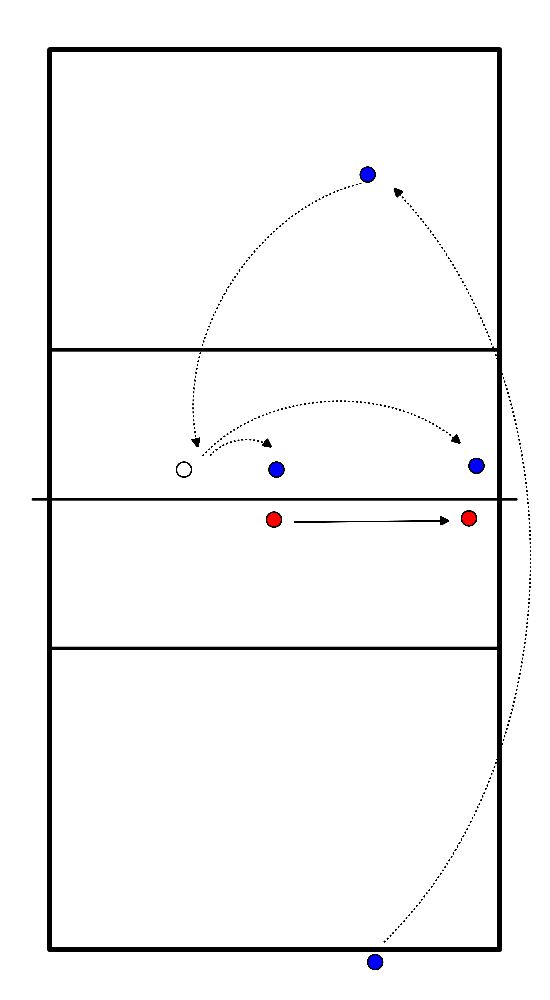
- Basic setup.
- After processing the service, a rally is played.
- At the net are 3 players with 1 ball.
- On the place of attack a ball is immediately thrown back and has to be drained.
- Play all balls and then rotate through.
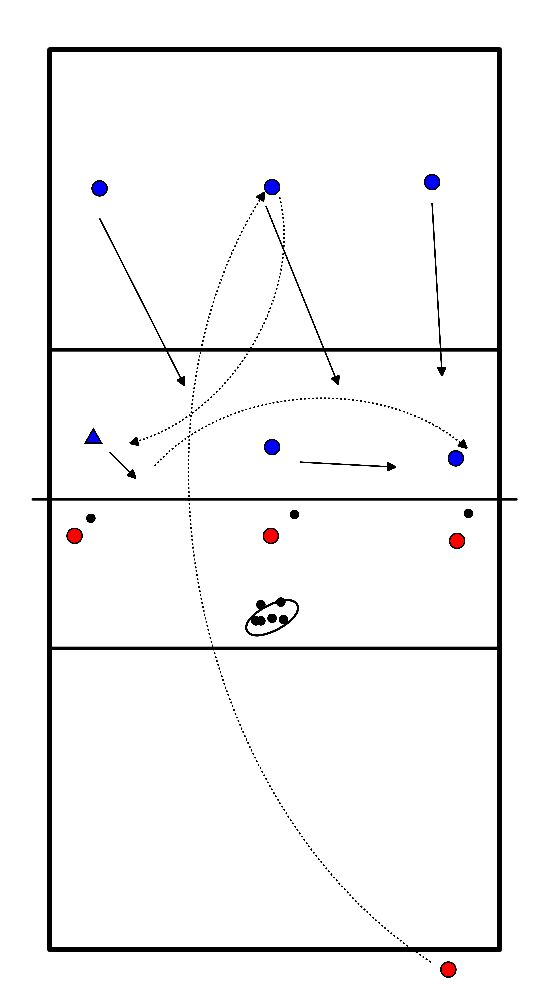
- Organization:
- Split group into trios with one hoop.
- They stand on field A at p1.
- Trainer with the balls on field B.
- Execution:
- Player hold the hoop together.
- Trainer hits ball.
- Trio must try to bounce the ball through the hoop.
- Retrieve ball and hand it in to Tr.
- Next trio.
- In addition to ball lane recognition, they learn to work together and communicate.
- On one side of the field there is a six in full formation.
- On the other side are 3 players.
- Behind the 3 players stand the servers.
- Exercise:
- Servers serve the ball, the 6 team defends this ball and plays out the rally.
- The 3-man team may defend and also rally.
- Point count:
- Service error, 1 point for the team that was set up.
- Ball on ground by the 3 team, point for the essayed team.
- Good service, but rally won by 3-player, point for 3-player.
- IF 3-TAL has 3 points three move on, if TEAM has 12 points, 3-tal and all servers must push up 5x.
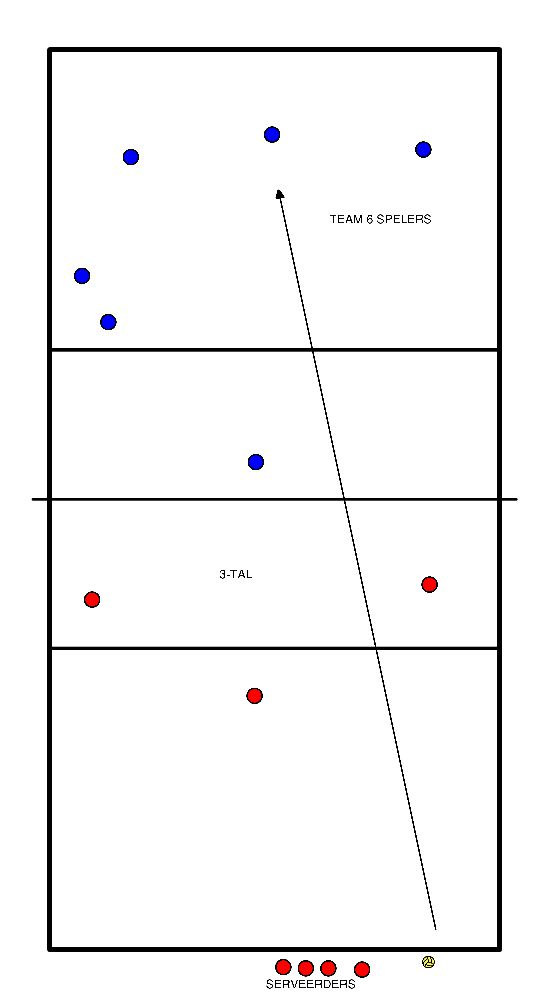
- This exercise can be done in 3 or 4 teams.
- Minimum number of players is 6 and maximum 8 per available field.
- In a 4-player team, two players on each side of the net.
- Use during the exercise half a net width per 3-4 team.
- In a 4-player team:
- 2 players on each side.
- The ball is thrown over the net at the start.
- Player A plays the ball for himself and at the 2nd contact he gives a set-up for player B.
- Player B tips the ball over the net with 1 hand.
- Player C plays the ball for himself and then gives a set-up for player D.
- D tips the ball over the net.
- After a team has played the ball over the net the players change places.
- In the case of a 3-player team:
- 2 players on one side of the net and the other player only on the other side.
- Player C has the ball and throws it over the net to the 2 team.
- Player A plays the ball for himself and at the 2nd contact he gives a set-up for player B.
- Immediately after giving the set-up, player A goes under the net.
- Player B tips the ball over the net with one hand.
- Player C plays the ball for himself and gives a set-up for player A.
- Player C goes to the other side of the net immediately after giving player A a set-up.
- Player A tips the ball over the net to player B.
- Player B plays the ball for himself and gives a set-up for player A.
- After giving the set-up player B goes under the net.
- Expansion:
- Possible mandatory blocking of tip ball by player not doing the passing.
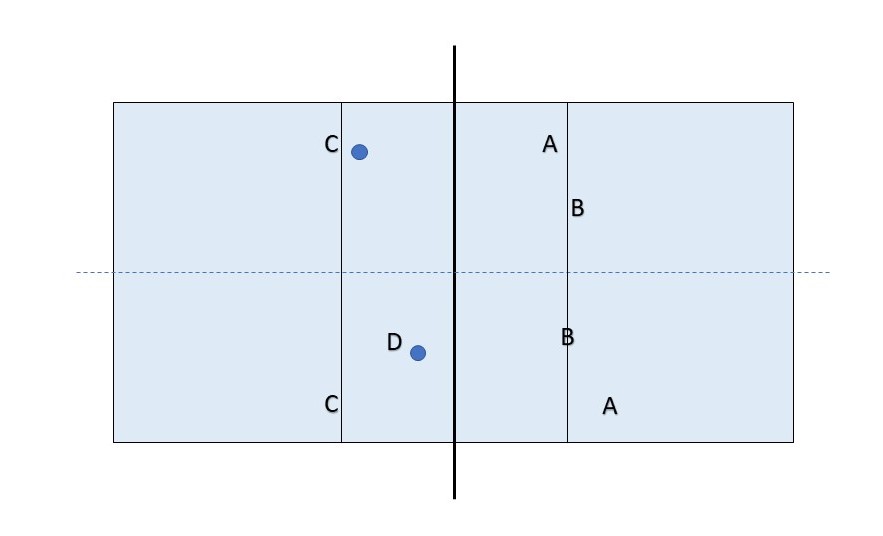
- Possible mandatory blocking of tip ball by player not doing the passing.







